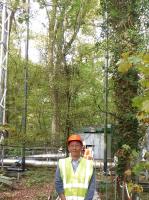レーザーイオン化 法による自動車排出ガスのリアルタイム質量分析(第1報) ―多成分同時分析装置の開発― // Real-time Mass Spectrometry of Exhaust Gas from Automobiles Utilizing Laser Ionization (First Report) ―Development of Simultaneous Analyzer of Multicomponents―
三澤 健太郎, 田中 光太郎, 田中 康一, 松本 淳, 石内 俊一, 齊川 次郎, 林 俊一, 藤井 正明, 柏木 隆宏, 中川 潤, 遠藤 克己, 渡辺 敬太郎, 山田 裕之, 後藤 雄一, Kentaro Misawa, Kotaro Tanaka, Koichi Tanaka, Jun Matsumoto, Shun-ichi Ishiuchi, Jiro Saikawa, Shun-ichi Hayashi, Masaaki Fujii, Takahiro Kashiwagi, Jun Nakagawa, Katsumi Endo, Keitaro Watanabe, Hiroyuki Yamada, Yuichi Goto
自動車技術会論文集
40
(
5
)
1333
-
1338
2009.09
[Refereed]


Click to view the Scopus page. The data was downloaded from Scopus API in January 07, 2026, via http://api.elsevier.com and http://www.scopus.com .